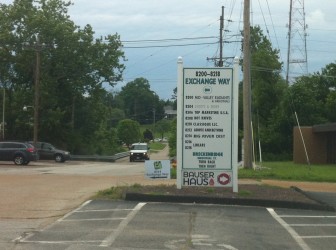Brentwood aldermen will consider two related bills at their June 16 meeting that may cost businesses in the Deer Creek floodplain money—one possibly more than the other.

Businesses in the floodplain built before Congress passed a flood insurance program in 2012 get insurance subsidies so they’re not penalized for decisions made before the act. These subsidies are slowing being phased out according to Brentwood Director of Planning and Development Justin Wyse.
“We have our base requirements we have to meet for properties to be eligible for flood insurance within the city (that’s one bill), and then if we go beyond that we can get discounted rates through the federal government for our properties (that’s the second). That’s what the city is considering,” Wyse told 40 South News last week.
The bill that would go beyond the base requirements states that if a business makes improvements that exceed 50 percent of the value of the building within any 10-year period the entire building will be required to be updated to current floodplain standards.
“For some properties it means they would have to be elevated, for some it would mean they would have to flood-proof the building. It would be unique for each business,” Wyse said.
The unpredictability prompted dire predictions from Brentwood business owners, attorneys representing businesses and others, who strongly opposed the second, stronger bill at the May 5 board of aldermen meeting.
Future disinvestment, potential for a chain reaction of the loss of property tax, concerns about the value of nearby properties if owners of buildings in a floodplain can’t afford to flood-proof were some of the worries.
Planning and Zoning recommended the first bill, to meet the base requirements, and not the second, which would go beyond that.
It would require a simple majority of the board to pass the first, and a 75 percent yes vote to overturn planning and zoning’s no vote to pass the second.

